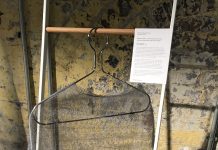Carlo Volpi reports
The students from the School of Design at the Royal College of Art in London recently showcased some of their current developments during the Work in Progress show, which took place at the Kensington Campus. The College has two separate knit courses: knitted textiles, a specialism of the Textiles MA, and knitwear, part of the Fashion MA. Traditionally, the knitted textiles students would develop fabrics for either fashion or interiors, whilst the knitwear students would focus on shapes and silhouettes rather than stitch structures.
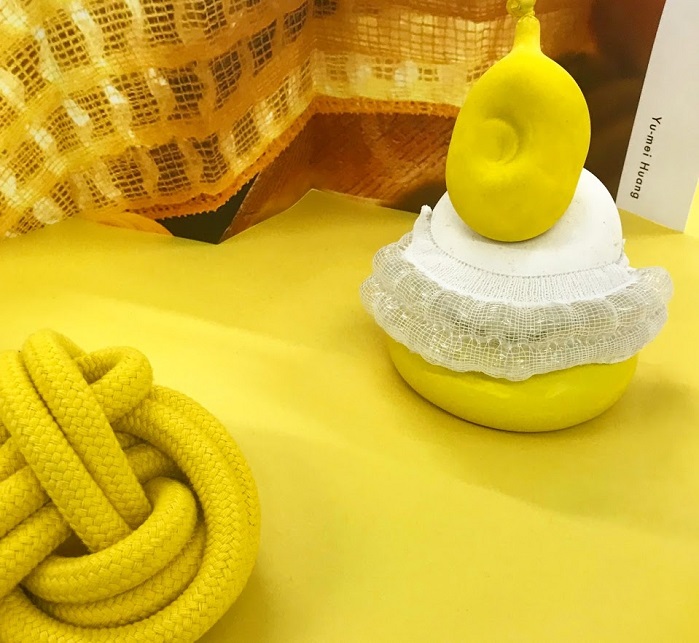
Changes in the industry, in the education, in technology and in the students as well are constantly reshaping what is being taught, and what an MA course should consist of. The knit students at the Royal College of Art come from very diverse backgrounds, and the recent applications of knitwear/knitted structures outside the conventional fashion environments have sparked a lot of interest amongst designers of other disciplines. Some of the students at the Royal College don’t come from a traditional knit background, and because of this their vision of what knitwear should be about is very fresh, innovative, fearless and not constrained by some of those boundaries that most very experienced people in this field have.

Yu-Mei Huang’s work focusses on creating a multi-sensory therapeutic space for the body, using a wide range of materials and yarns to manipulate three-dimensional textures and create innovative garments. Yu-Mei’s work has strong tactile qualities, and a lot of her visual research is about the relationship between the wearer and an ideal, comforting space around them. The idea of comfort is translated into very soft, cosy garments. Polypropylene yarns are mixed with light materials like bubblewrap and silicone, and there is a playful mix of chunky fabrics and interactive, fine gauge textiles developed on industrial machines.
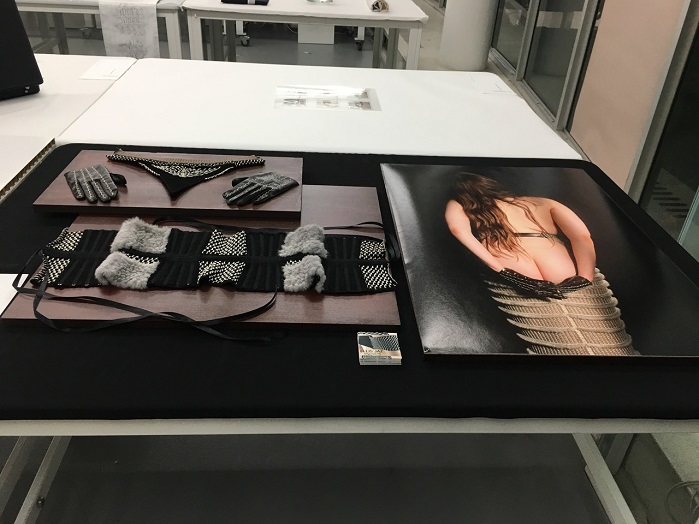
Ellis Jaz is a very accomplished knitter who works mainly on hand flat machines. Her passion and knowledge of knitwear is clearly reflected on her use of intricate, hand manipulated structures where she combines stretchy yarns with strips of leather and fur.
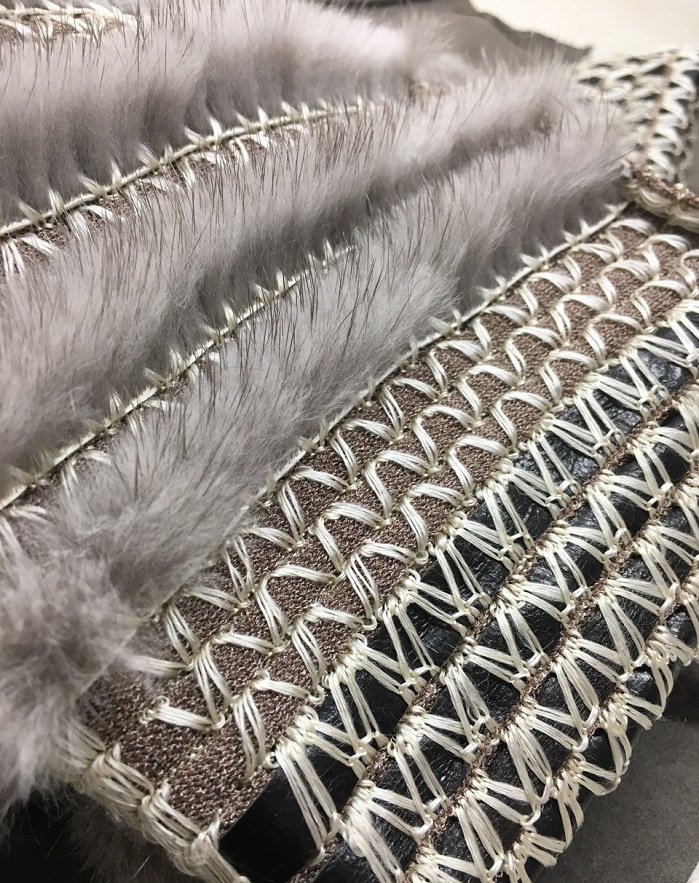
“This work places an empowerment upon one’s right to desire,” said Ellis. “Through an obsessive and insistent dedication to craft the garments are created as romantic gifts of devotion.” For the work in progress show, the designer presented a collection of exquisitely crafted underwear pieces and garments.
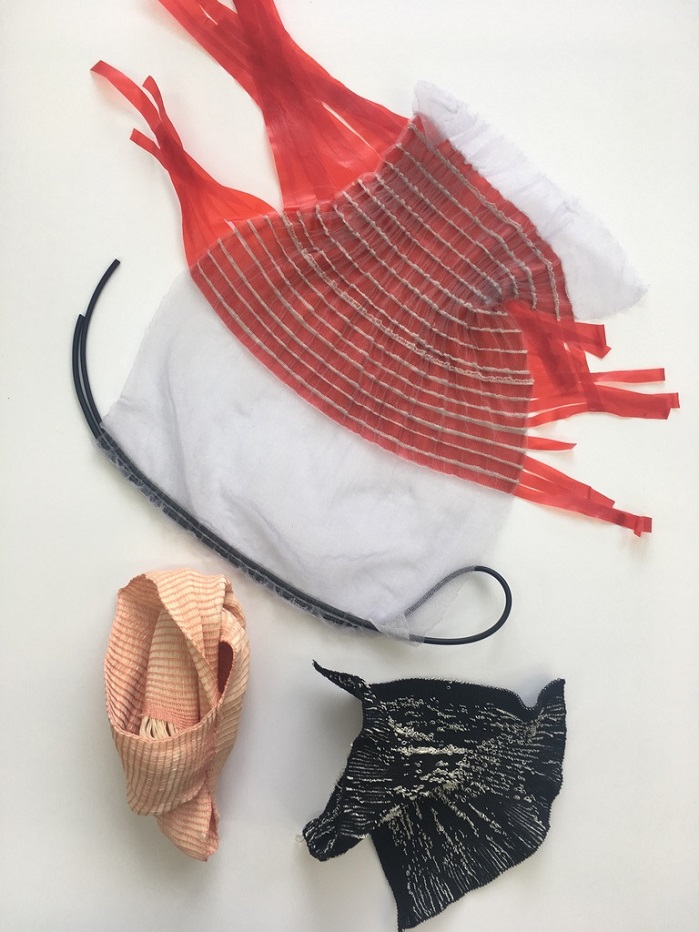
Holly Ross’ work explores the relationship between structure and embellishment within knitted textiles. As an innovative material thinker who works organically to exploit materials, Holly is working to challenge ideas of structure and embellishment. The designer has a very experimental approach to materials, which allows her to distort and reinvent conventional knit fabrics into organic, three dimensional structures. Inspired by the optical effects of prisms, Holly is developing knitted textile accessories and body pieces which encapsulate the notion of refraction, reflection and distortion. Through exploring ideas around embellishment, traditional connotations of knit and softness are challenged to realise a more sculptural approach.
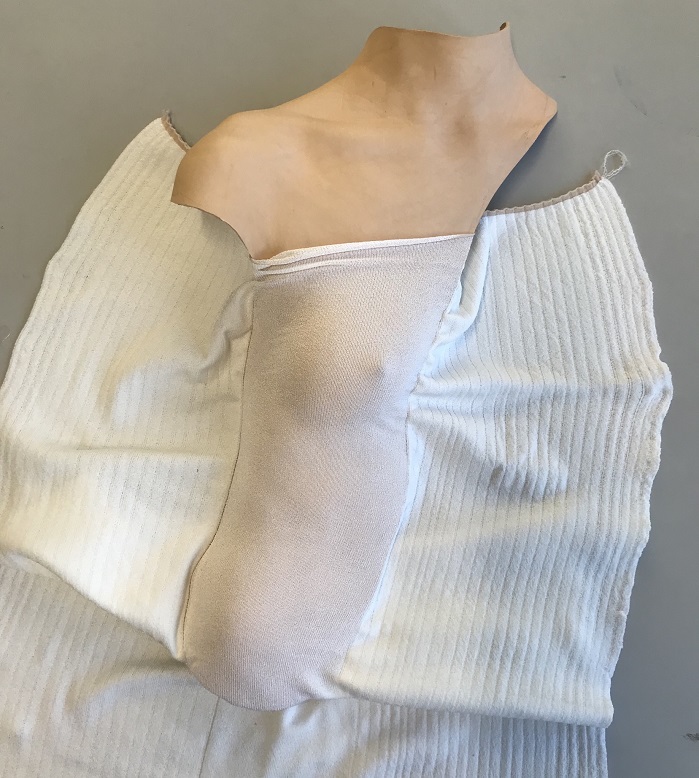
Fashion knitwear student Katarina Dubbick makes bespoke garments for the people she works with, portraying their unique body shape with moulded body fragments integrated into knitwear. Katarina’s work explores a very unique relationship between the body and cloth, and how the latter adapts around the body creating fluid sculptural shapes. The tension between the smooth, leather body fragments and the drapey fabrics that envelop them creates a very intimate sensory experience for the viewer and the wearer alike. Katarina uses unusual yarn combinations, like metallic viscose and elastic, knitted in simple structures such as ribs or single bed fabrics. Some of her textiles have a very strong sportswear/performance aspect with a soft, compact handle. This allows for original developments with volumes and silhouettes.
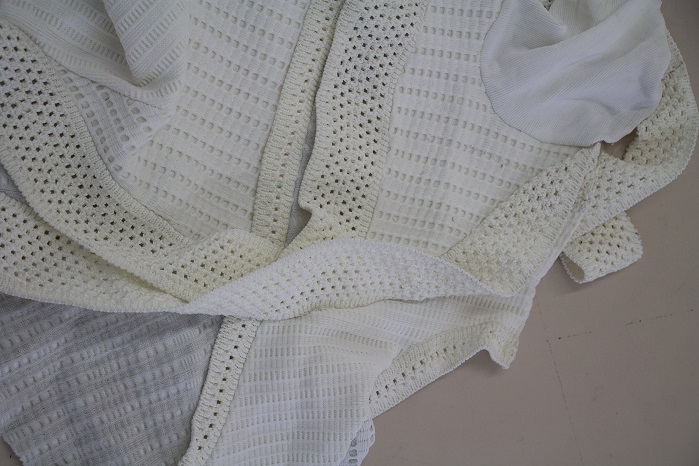
The work of Rebecca Marsden is characterised by sporty, open structures with skin tight performance fabrics. Digital and hand craft skills collide in her garments: fine gauge engineered fabrics are layered with more organic, chunky structures developed on hand flat machines. Functional silhouettes that allow for movement and performance (Rebecca is a keen silk acrobat) hug the body in sharp suits, whilst heavier knit structures distort conventional body shapes, at times enhancing or reinventing them. Rebecca is also developing some experimental samples where expandable foam and silicone are pushed through her knitted meshes. There is a very cinematic quality to these fabrics, they look very much like a still frame from some sort of explosion, or eruption. Rebecca is experimenting with ways to incorporate these ideas into her garments.
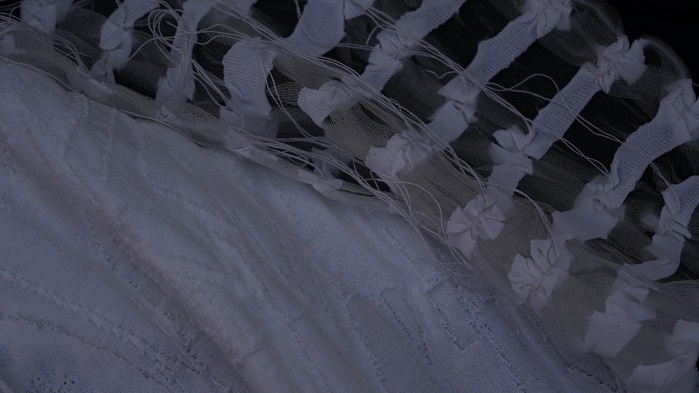
Textile student Xingchen Lu was inspired by Marina Abramović and Ulay’s performance The Other: Rest Energy. In this piece, the forces of gravity pull away the two lovers, but at the same time they are kept together by holding onto a bow and arrow. The delicate equilibrium of this posture, the dangerous yet perfect tension that keeps the two artists together were the initial point of Xingchen’s exploration: the designer started to observe how a similar notion of tension and release is also present in nature and everyday things, such as the squeezing and bursting of glaciers and volcanoes. Xingchen then applied the same forces to her knitted fabrics to explore their behaviour. The changes naturally formed in the fabrics were later applied to the garment silhouettes, creating shapes in an organic manner, without any pattern cutting. This includes changes between soft and hard materials, and the density and wrinkly textures of knitted jacquard patterns.

Both the fashion and the textiles students will show their final work at the end of the year show next summer. Terms like collection and seasonal seem to have become less and less relevant when observing the work of these new designers. There is a very original and personal story behind every piece, that is closely entangled with the designer’s story. This sense of identity seems to be ever more important for tomorrow’s fashion and textiles designers, who simply don’t want to fit in with the mechanics of such a big industry anymore. Their small, yet unique voices are building and reshaping the foundations of tomorrow’s fashion.

Subscribe To Our Newsletter
Join our mailing list to receive the latest news and updates from our team.











